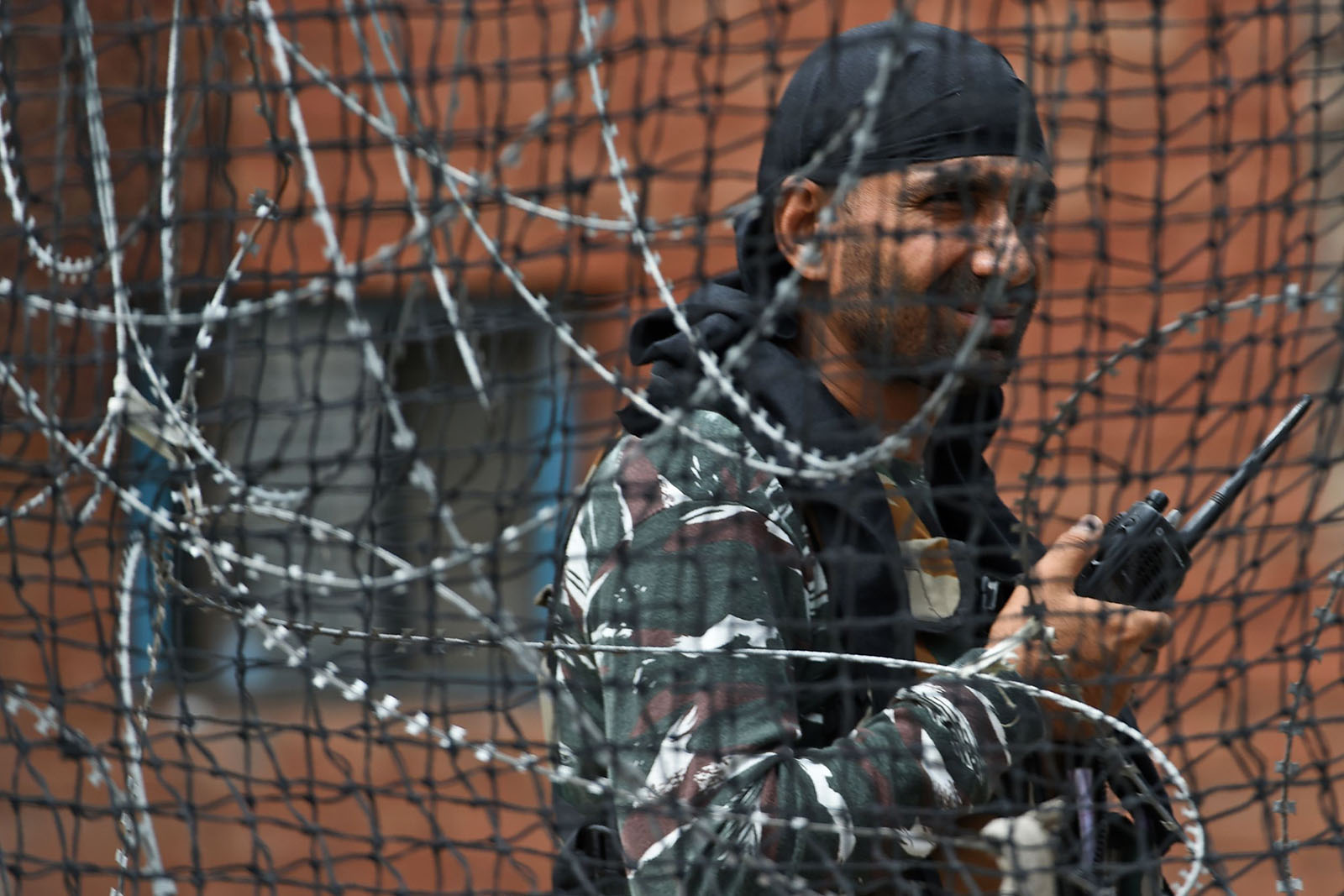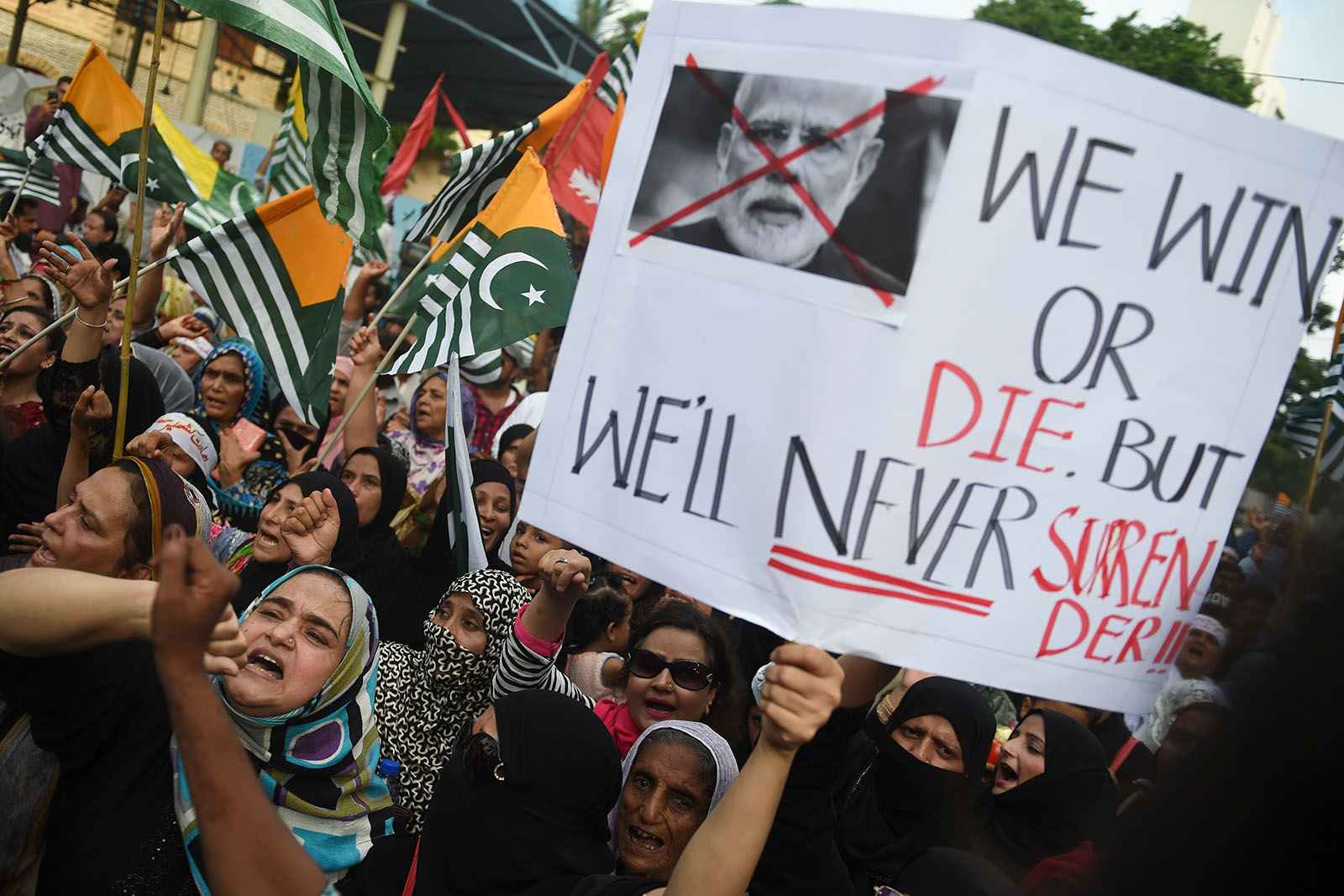It's been 25-days and occupied Kashmir remains under severe Indian military siege. Hundreds of thousands of Indian troops continue to enforce a strict curfew and other restrictions to prevent people from staging anti-India demonstrations in occupied Kashmir.
The valley is under strict lockdown since August 5 when the Narendra Modi-led government in New Delhi stripped occupied Kashmir of special status by repealing Article 370 of the Indian Constitution.
The occupation authorities have converted Kashmir valley into a military garrison by deploying hundreds of thousands of Indian troops and paramilitary personnel in every street, line and by-lane to stop people from staging demonstrations against the abrogation of the special status of the territory.

However, people defying curfew and other restrictions have been staging protests to express their resentment against the Indian occupation and nefarious move of the Modi government.
At least 500 incidents of protests have occurred in the occupied territory so far during which hundreds of people have been injured due to the firing of bullets, pellets and teargas shells by Indian forces’ personnel.
A senior government official told media that as many as 36 persons have received pellet injuries in the Kashmir valley since August 5. He said that the numbers were based on records available with hospital authorities in Srinagar.
The data from other hospitals in the valley was not available.
Occupied Kashmir has been turned into a big jail and hell for its inhabitants. While people have been confined to their homes, patients with critical ailments are not being allowed to move to hospitals.
Medical stores and pharmacies have run out of stocks.
Residents are facing immense hardships due to acute shortage of essential commodities like baby food and the valley is giving the look of a humanitarian crisis.
People are not being allowed to participate in the funeral prayers of their dear ones who passed away.

All internet, communication services and TV channels are closed in the Kashmir valley and in many areas of Jammu region since August 5. Local newspapers are unable to update their online editions while the majority of them could also not hit the stands due to restrictions.
Schools in the Kashmir valley continue to remain shut as parents are not ready to risk the lives of their children in the prevailing grim situation.
Occupation authorities continue to keep almost all Hurriyat leaders, including Syed Ali Gilani and Mirwaiz Umar Farooq, under house arrest or in jails.
Over 10,000 Kashmiris including hundreds of political leaders and workers have been detained in jails and police stations and makeshift detention centres. Those arrested also include even pro-India politicians like Farooq Abdullah, Omar Abdullah, Mehbooba Mufti, Ghulam Ahmed Mir, Engineer Abdur Rasheed and Shah Faesal.
It is also worth mentioning here that the Kashmiris are unable to stock essential commodities for winter season. It will cost huge number of deaths even if curfew is lifted in the later part of summer.
The Kashmir valley remains cut off from the rest of the world due to closure of the Srinagar-Jammu Highway due to snowfall during most part of winter.


